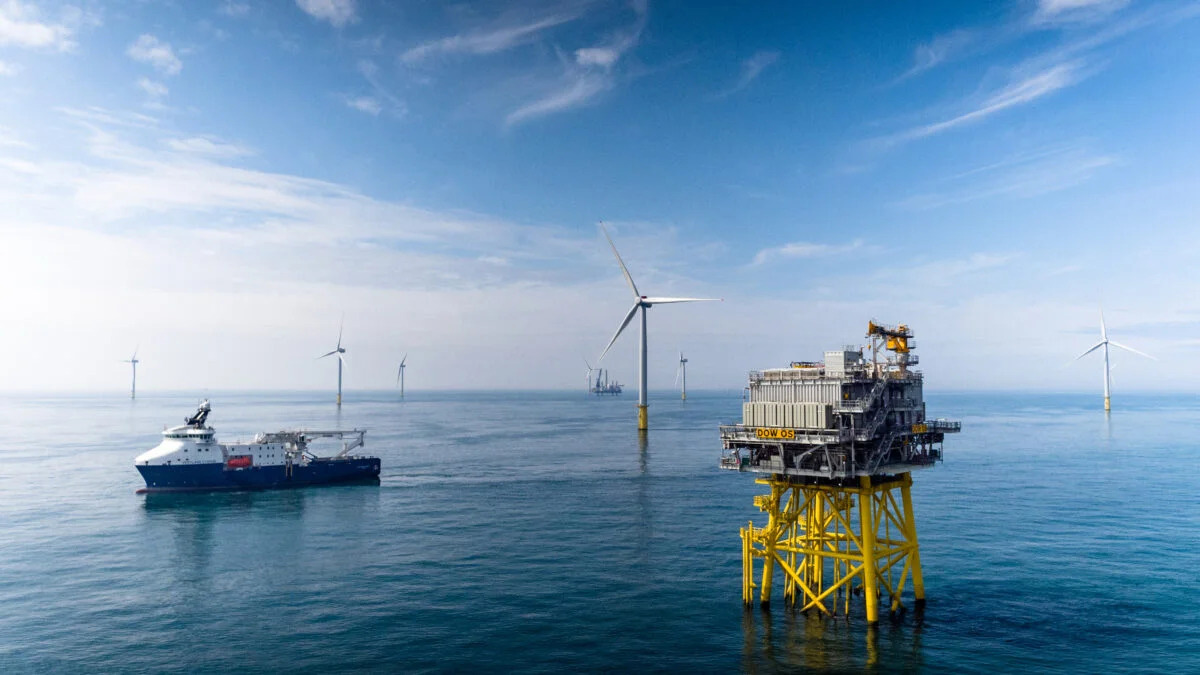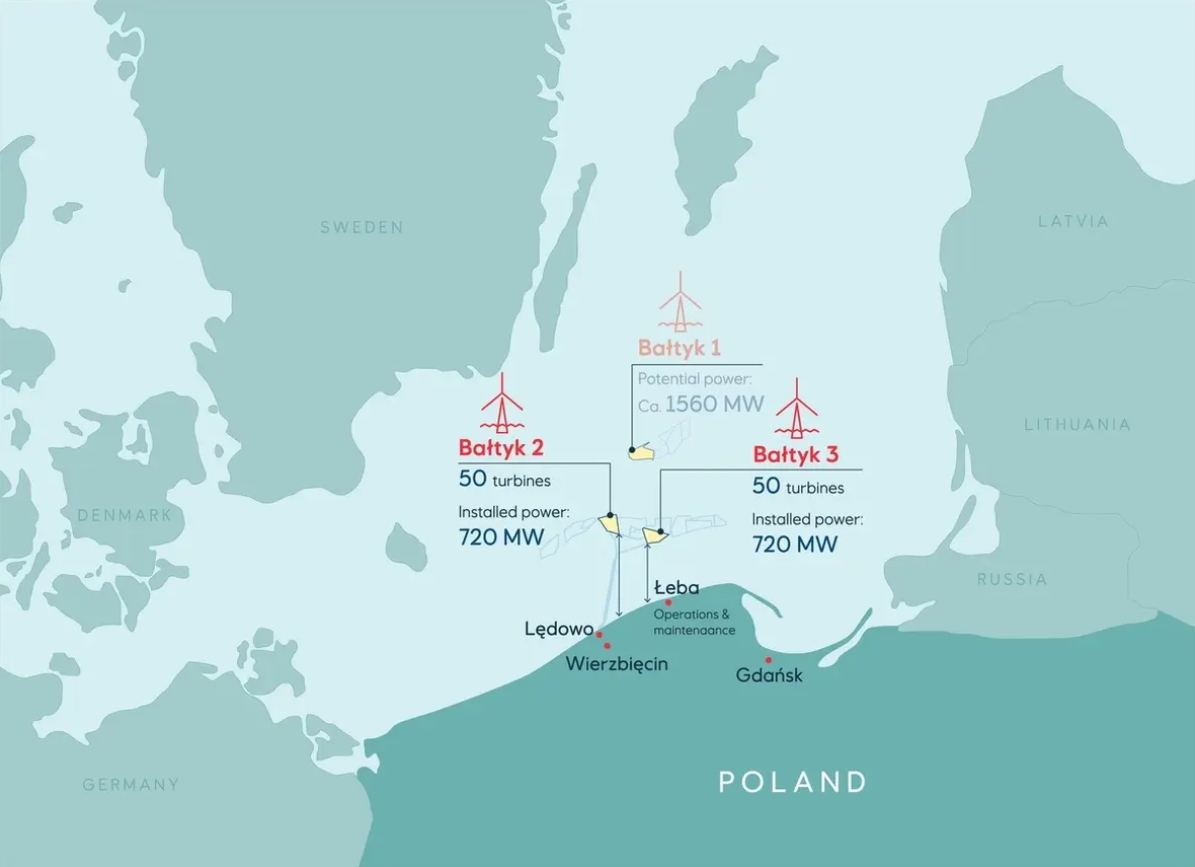28 May 2025
Offshore wind making waves as Polish FID lifts capacity financed in 2025 to 5.6 GW

Equinor and Polenergia have reached final investment decision (FID) for their Bałtyk 2 and 3 offshore wind farms, marking a historic milestone for Poland’s energy transition and the broader European offshore wind sector. Europe has financed six offshore wind projects this year so far. Together they have a total capacity of 5.6 GW – a 107% increase on 2024.
Equinor and Polenergia have reached FID and financial close on their Bałtyk 2 and 3 offshore wind farms in the Baltic Sea. The €7.2bn investment makes it the second largest offshore wind investment in Poland to date.
Poland is focusing its Presidency of the Council of the EU on energy security and industrial competitiveness. The Bałtyk 2 and 3 projects stand as a flagship example of how offshore wind can deliver on both those fronts. With a combined capacity of 1.4 GW and 100 offshore wind turbines, Bałtyk 2 and 3 will generate affordable electricity for two million Polish homes, while significantly boosting the country’s energy independence.
The wind farms are expected to be operational by 2028 and will play a key role in helping Poland meet its target of 5.9 GW of offshore wind capacity by 2030.
With over €6bn financing secured through the project finance initiative Bałtyk 2 and 3 are the single largest project finance transaction in the history of Poland. The European Investment Bank (EIB) is by far the largest lender for the Bałtyk 2 and 3 projects. The EIB has provided a €700mn loan – €350mn for each project. This comes as the EIB continues to step up its efforts to accelerate wind energy manufacturing and deployment across Europe. The Bałtyk projects are backed by around 30 financial institutions. This reflects the robust investor confidence in Poland’s offshore wind potential.

“Bałtyk 2 and Bałtyk 3 represent the beginning of a new era in Poland’s offshore wind energy development. These wind farms are set to contribute to Poland’s industrial future by producing renewable electricity for Polish households, creating employment opportunities and enhancing both energy security and the energy transition. We will collaborate with industry partners to ensure their delivery is safe and efficient”, said Michał Jerzy Kołodziejczyk, Country Manager in Poland.
“This financial closure is a very important, symbolic moment that seals years of planning and preparation, and at the same time opens a completely new chapter on the path of Polenergia’s further dynamic development. The Baltic offshore wind farm project is a massive investment, but also a wonderful example of how, thanks to perseverance, commitment, and a strong Polish-Norwegian partnership, a bold vision from many years ago, when no one in Poland even thought about offshore wind energy, is finally taking real shape before our eyes,” said Dominika Kulczyk, Chairwoman of the Supervisory Board of Polenergia.
Expanding Poland’s offshore wind supply chain
With PLN 300bn in capital expenditure by 2040, offshore wind is the largest investment campaign in post-war Poland. The offshore wind sector is becoming a springboard for Polish companies to grow into European green tech champions. Polish companies are already involved in producing foundations, cables, and other key components, ensuring that a significant share of the investment stays within the country. And the Bałtyk projects will further boost the development of Poland’s offshore wind supply chain.
Poland’s Sector Deal sets targets to maximise the participation of Polish companies in offshore wind development. Polish companies are already involved in producing foundations, cables, and other key components, ensuring that a significant share of the investment stays within the country. Equinor and Polenergia want to reach up to 38% participation of Polish companies in the entire project cycle. The project partners are also advancing the Bałtyk 1 project, which has received its environmental permit this year and is being prepared for the offshore wind auction expected in the second half of 2025. The project, with a total capacity of up to 1.56 GW, has even greater ambitions for local content, aiming to exceed 40%.
Learn more about the Polish offshore market at the Polish Wind Energy Association Annual conference. In the face of growing geopolitical tensions and competition between global powers, the conference brings together political leaders, experts and decision-makers from Poland and abroad to jointly set the course for a stronger, more integrated European Union.
6th offshore wind farm to reach FID in 2025
Bałtyk 2 and 3 are not the first offshore wind farms to reach FID in 2025. Europe has seen 6 projects financed this year already.
In Poland PGE and Ørsted financed their Baltica 2 project which is set to deliver 1.5 GW. In the UK Red Rock Renewables and ESB are advancing with their 1,1 GW Inch Cape project. And in Germany Vattenfall is moving forward with Nordlicht 1 and 2, expected to provide a total of 1.6 GW.
This means that Europe has already financed 5.6 GW offshore wind capacity in 2025 – 107% more than in all of 2024.
|
Project Name |
Total Project Capacity |
Final Investment Decision Date |
|
Inch Cape |
1080 |
27/01/2025 |
|
Baltica 2 |
1498 |
29/01/2025 |
|
Nordlicht 1 |
980 |
25/03/2025 |
|
Nordlicht 2 |
630 |
25/03/2025 |
|
Baltyk II |
720 |
20/05/2025 |
|
Baltyk III |
720 |
20/05/2025 |
Major challenges remain
The EU offshore wind sector is one of the fastest growing sectors in the EU economy. But several major challenges remain. Aside from grid connection issues and the slow ramp up of electrification, increasing costs are currently the main challenge for offshore wind projects.
Inflation, surging input costs and rising interest rates pose challenges for every industry in Europe. But the capital expenditure (CAPEX)-intensive offshore wind industry is disproportionately affected, especially where Governments don’t offer revenue stabilisation mechanisms like two-sided contracts for difference (CfDs).
Poland is offering CfD. And several Governments are adjusting their auction design to adapt to those changed market conditions. After a failed auction in December 2024 Denmark will introduce CfDs. The Netherlands are also considering CfDs in their new auction design. That’s good news: CfDs offer predictability about future revenues, lower the risk of offshore wind development and crucially help keep financing costs down.

